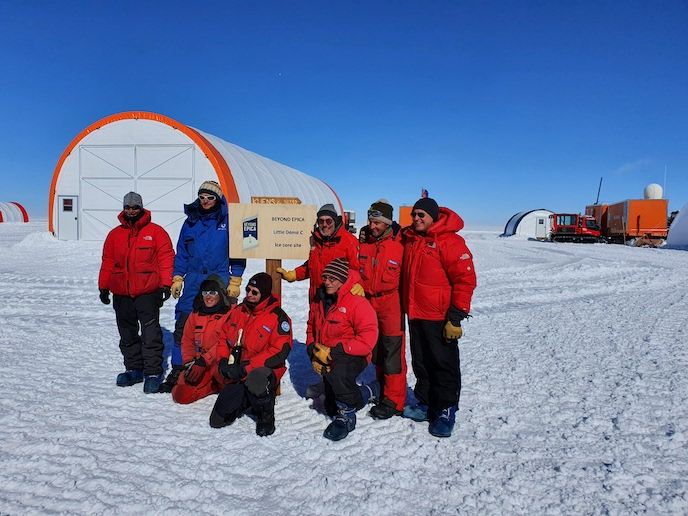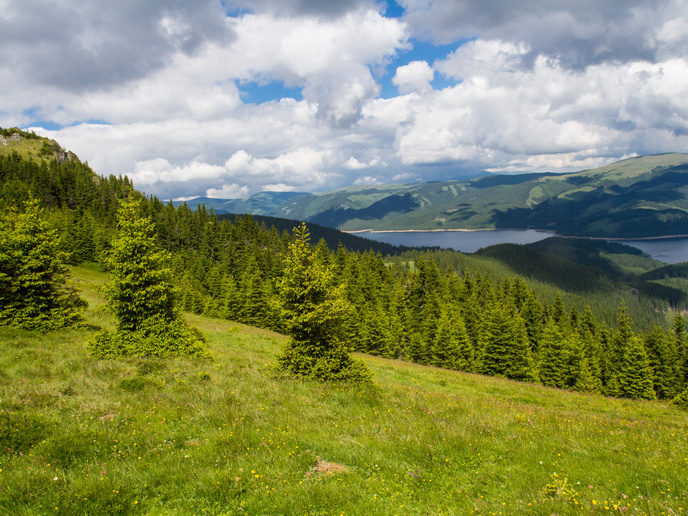Antarctic pre-drilling survey prepares for the climate lessons of ‘Oldest Ice’
During the Mid-Pleistocene Transition (MPT), around 0.9 to 1.2 million years ago, glacial and interglacial cycles changed from being 40 000 to 100 000 year cycles. One theory is that the climatic shift happened as the Earth responded to changes in the orbit and inclination of its path around the sun (‘orbital forcing’). So far, lack of evidence about the atmospheric composition of the period thwarts firm conclusions. Analysing climate proxies in the ice records could yield information about the impact of these changes, in particular greenhouse gases, on the climate system. The EU-supported BE-OI project was established to identify a drilling location from which future drilling, (as a continued part of the Beyond EPICA project), could obtain the first high-resolution climate records older than 800 000 years old. The EU’s coordination and support action enabled the team to locate just such a site, where ice approximately 1.5 million years old is undisturbed and of sufficient resolution, about 40 km away from the Italian-French station, Concordia. The team are now preparing for the drilling phase.
Qualifying sites and validating their ice age
Given the vast expanse of the East Antarctic Ice Sheet, the BE-OI consortium focused on more accessible regions with permanent stations – specifically those around Dome C, as well as in Dronning Maud Land, near Dome Fuji. Both locations are known to host ice at least 700 000 years old. To gauge the age of ice cores, the team used radar to measure, in high resolution, ice thickness and so determine the topography (the internal stratigraphy) of the bedrock underneath the ice sheet. Repeated radar also determined the vertical velocity of the ice (how fast it moves downwards) and estimated the geothermal heat flux from the bedrock underneath. This is critical to determining the rate of melting at the base of the ice sheet. A rapid-access drilling technique was used to measure boreholes’ temperature distribution, providing estimates for the age of the ice in the upper part of the ice sheet. The combined data informed ice-flow models, used to estimate age for those depths hitherto unknown. “Encouragingly, one of our best radar systems, deployed last season, observed a stagnant layer of ice at the base, not clearly visible before. Independently, our updated version of the ice-flow model also predicted this. Both predicted the same thickness – with the age of the ice reaching 1.5 million years at the top of the basal layer,” recalls Olaf Eisen, project coordinator.
Carbon cycle-climate feedback mechanisms
BE-OI was pursuing an objective developed by the International Partnerships for Ice Core Sciences (IPICS) to explain what caused the MPT and as a pointer to long-term carbon cycle-climate feedback mechanisms. The former EPICA consortium took on the challenge by providing BE-OI as the European contribution. In the coming Antarctic field season (November 2020 to January 2021), the BE-OI drill system will be set up, preparing the hole for the casing in the firn (snow left from past seasons) column. Researchers will then be able to measure specific greenhouse gas levels in air bubbles. “Solving one of the most enigmatic riddles of the climate system – Why did the glacial/interglacial cyclicity change during the MPT? – will improve our understanding of how the climate system works, especially the role of greenhouse gases, such as carbon dioxide and methane. This is vital to reliably predict the long-term future of our climate,” explains Eisen.
Keywords
BE-OI, EPICA, ice core, Mid-Pleistocene Transition, glacial, interglacial, climate, greenhouse gases, carbon dioxide, methane, Antarctic, radar







